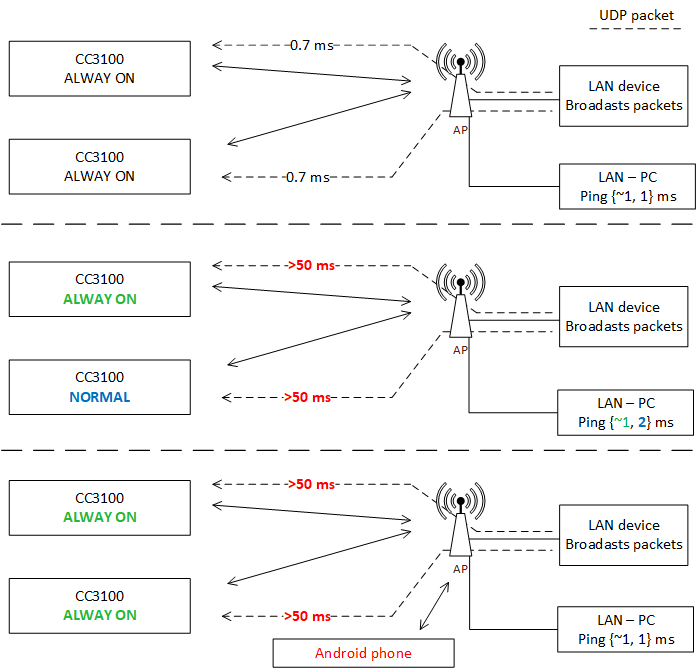Other Parts Discussed in Thread: CC3100
Hi,
I am working on CC3100 module and I am having some issues with the latency of UDP packets which is a key parameter in my project. Please read the following scenario:
Everything is good when one CC3100 (always on power policy) is connected to AP (commercial type); the time between packet transmission (broadcast) from LAN device and reception on CC3100 is about 0.7 milliseconds.If another CC3100 connects to AP (also in always-on power mode) measured time is not affected. However, when I switch power policy to normal on one of the connected CC3100, measured time is affected on both devices and reaches about 70 ms or more. The same behavior can be observed if I connect android phone to AP. Nevertheless, the ping command is without a change (1 ms). Moreover, after some time, measured times will reach the expected values (1.5 ms for normal mode power policy and 0.7 ms for always-on policy) and few tens of seconds later situation goes back to 70 ms or more. This repeats.
Does anyone have any experience or hints?
Thanks,
Stanislav.


